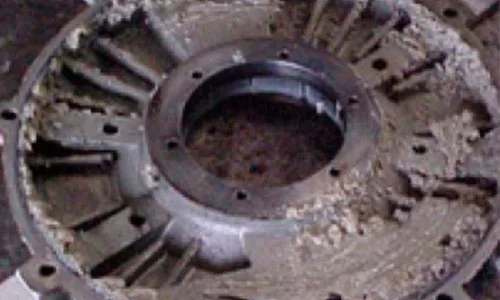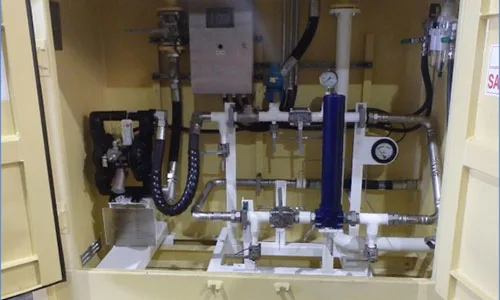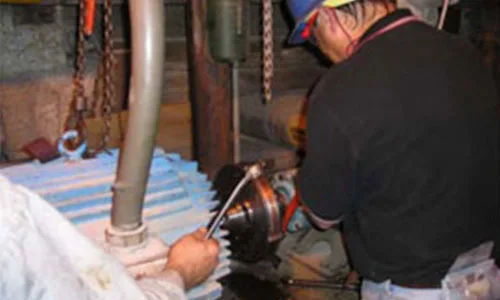Electric Motor Bearing Defects

Customer: Hunter Valley Coal Mine
Date: September 2005
Contact: Maintenance Engineer
Report By: Mark Drayton
1.0 Situation

Figure 2 – Cross Sectional view of Bearing Assembly
The site was experiencing a high frequency of electric motor bearing faults. Condition monitoring reports had identified specific motors as manifesting bearing defects and had suggested that a “lack of lubricant” was a significant factor contributing to the defects.
An analysis of past reports highlighted that bearing alignment, sealing or lubrication frequency was adversely influencing the frequency of lubricant related faults.
Reports submitted by plant service providers had indicated that lubrication frequency was in accordance with maintenance specifications and that motors were greased as required. However despite the volume of grease applied to bearings, defects were still being reported.
2.0 Analysis
In order to understand the flow of grease between the nipple and the discharge valve, the GOSS Engineering team conducted a review of all electric motor bearing housing, grease-way porting and seal design.
Visual inspection of several dismantled motors was carried out to determine if the grease, when applied in service, did in fact purge through the bearing as required.
3.0 Findings
A review of site operational procedures revealed the following:




4.0 Conclusion
As grease is continually rolled and worked increasing pressure will squeeze small amounts of oil out of the soup matrix. As a consequence, grease can firm up in service. Older grease will exhibit a much higher resistance to flow then fresh grease.
Old, stiff grease passing through the rough, cast reservoir will offer a greater resistance to flow, compared with fresh grease flowing into the inboard side of the bearing against the felt seal.
As the felt seal wears, it opens a short passage for fresh grease to flow through into the armature area. If the grease is taking the least line of resistance and passing through into the armature then the bearing will not be appropriately flushed with fresh grease.
The bearing defects are not the result of inadequate lubrication on the part of the service provider but appear to be occurring through insufficient flushing of lubricant through the bearing.
GOSS Engineering recommends that advice be sort regarding an up grade on the sealing arrangement on the inboard side of the bearing thereby improving lubricant flushing and enhancing bearing performance.
The presence of water in the motor was of concern and highlighted the importance of preserving maintenance protocols that prevent high pressure hoses being used to clean electric motors with IP ratings as low as 55.
The bearing defects attributed to bearing skidding can be alleviated by replacing roller bearings with deep grooved ball bearings that will enhance the degree of freedom of the rolling elements, particularly with direct coupled electric motors.
For more information related to lubrication of electric motor bearings contact Mark Drayton at GOSS Engineering on 0438 000 624.

Revolutionary
Power Transfer
A world-changing industrial technology that saves energy, reduces operation & maintenance costs and improves system reliability.








